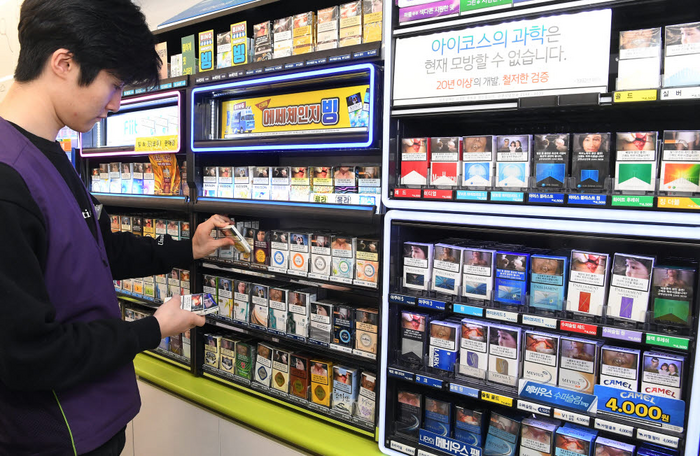
According to a report by South Korean media outlet ET News, the South Korean government is considering increasing cigarette taxes to compensate for the tax revenue losses caused by a prolonged economic recession. Some individuals have even suggested the possibility of a significant price hike in cigarettes next year, with prices potentially reaching as high as 8,000 Korean won.
According to industry insiders, a recent academic conference discussed the argument of gradually increasing cigarette prices to ₩900 per year. The conference, titled "Current Status and Future Prospects of Tobacco Price Policies," organized by the South Korean Smoking Cessation Association, highlighted the need for a gradual increase linked to price indices, rather than a sudden hike.
Starting from 2024, the price of cigarettes in South Korea must gradually increase every year to maintain the real price of cigarettes relative to the total income of the population. By 2030, the price of cigarettes will reach 10,000 Korean won, the average for OECD countries. This move is expected to stabilize tax revenue and effectively discourage continuous smoking, ultimately reducing the smoking rate.
Director Lee Sung-gwi of the Korea Center for Tobacco Control Research and Education highlighted the limitations of the government's previous incremental price increases, stating, "We need a policy that convinces people we can achieve this."
In addition to the gradual price increase, a plan to raise prices by approximately 1,800 Korean won every two years has been proposed. However, some argue that this is not realistic, as the increase in cigarette prices from 2,500 Korean won to 4,500 Korean won in 2015 led to increased social costs due to public resistance against taxation.
So far, the price of cigarettes and tobacco taxes in South Korea have sporadically increased substantially. While a significant increase in cigarette prices seems to have an obvious effect in reducing smoking rates, the impact on smoking cessation is short-lived. In fact, as cigarette prices rose, the smoking rate decreased from 24.2% in 2014 to 22.6% in 2015, a decrease of 1.8 percentage points. However, the following year, in 2016, the smoking rate began rising again, reaching 23.9%. Although tax revenue seemed to increase in the short term, since 2016, tobacco-related tax revenue has stagnated or decreased.
We welcome news tips, article submissions, interview requests, or comments on this piece.
Please contact us at info@2firsts.com, or reach out to Alan Zhao, CEO of 2Firsts, on LinkedIn
Notice
1. This article is intended solely for professional research purposes related to industry, technology, and policy. Any references to brands or products are made purely for objective description and do not constitute any form of endorsement, recommendation, or promotion by 2Firsts.
2. The use of nicotine-containing products — including, but not limited to, cigarettes, e-cigarettes, nicotine pouchand heated tobacco products — carries significant health risks. Users are responsible for complying with all applicable laws and regulations in their respective jurisdictions.
3. This article is not intended to serve as the basis for any investment decisions or financial advice. 2Firsts assumes no direct or indirect liability for any inaccuracies or errors in the content.
4. Access to this article is strictly prohibited for individuals below the legal age in their jurisdiction.
Copyright
This article is either an original work created by 2Firsts or a reproduction from third-party sources with proper attribution. All copyrights and usage rights belong to 2Firsts or the original content provider. Unauthorized reproduction, distribution, or any other form of unauthorized use by any individual or organization is strictly prohibited. Violators will be held legally accountable.
For copyright-related inquiries, please contact: info@2firsts.com
AI Assistance Disclaimer
This article may have been enhanced using AI tools to improve translation and editorial efficiency. However, due to technical limitations, inaccuracies may occur. Readers are encouraged to refer to the cited sources for the most accurate information.
We welcome any corrections or feedback. Please contact us at: info@2firsts.com






